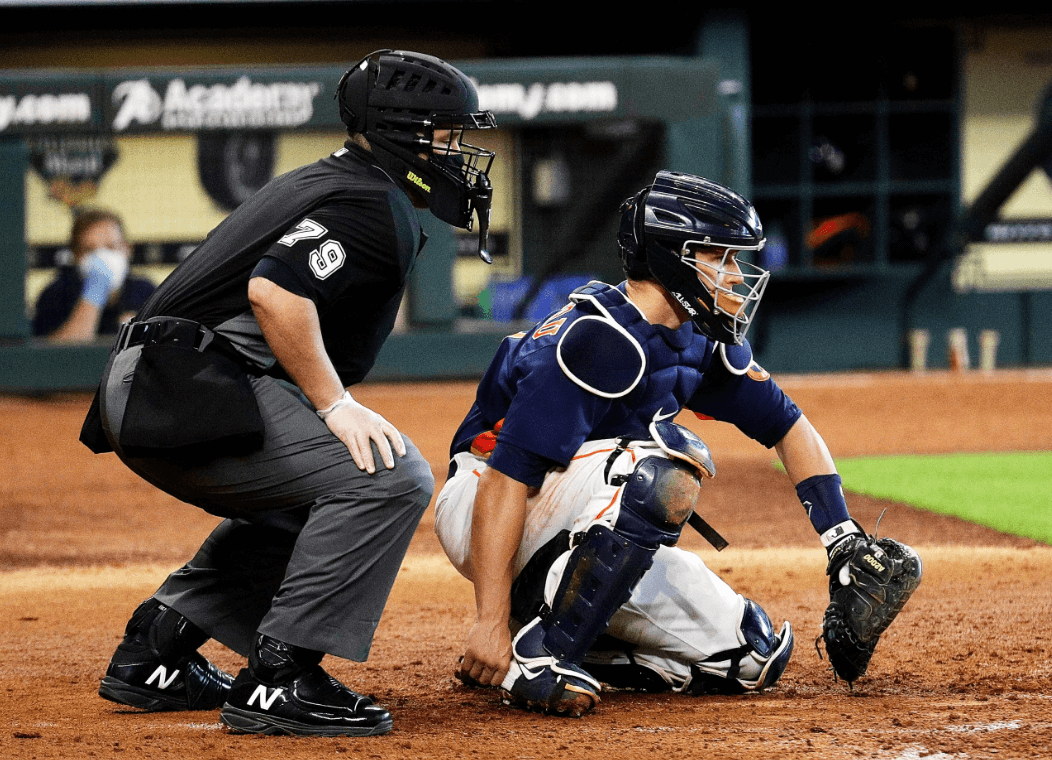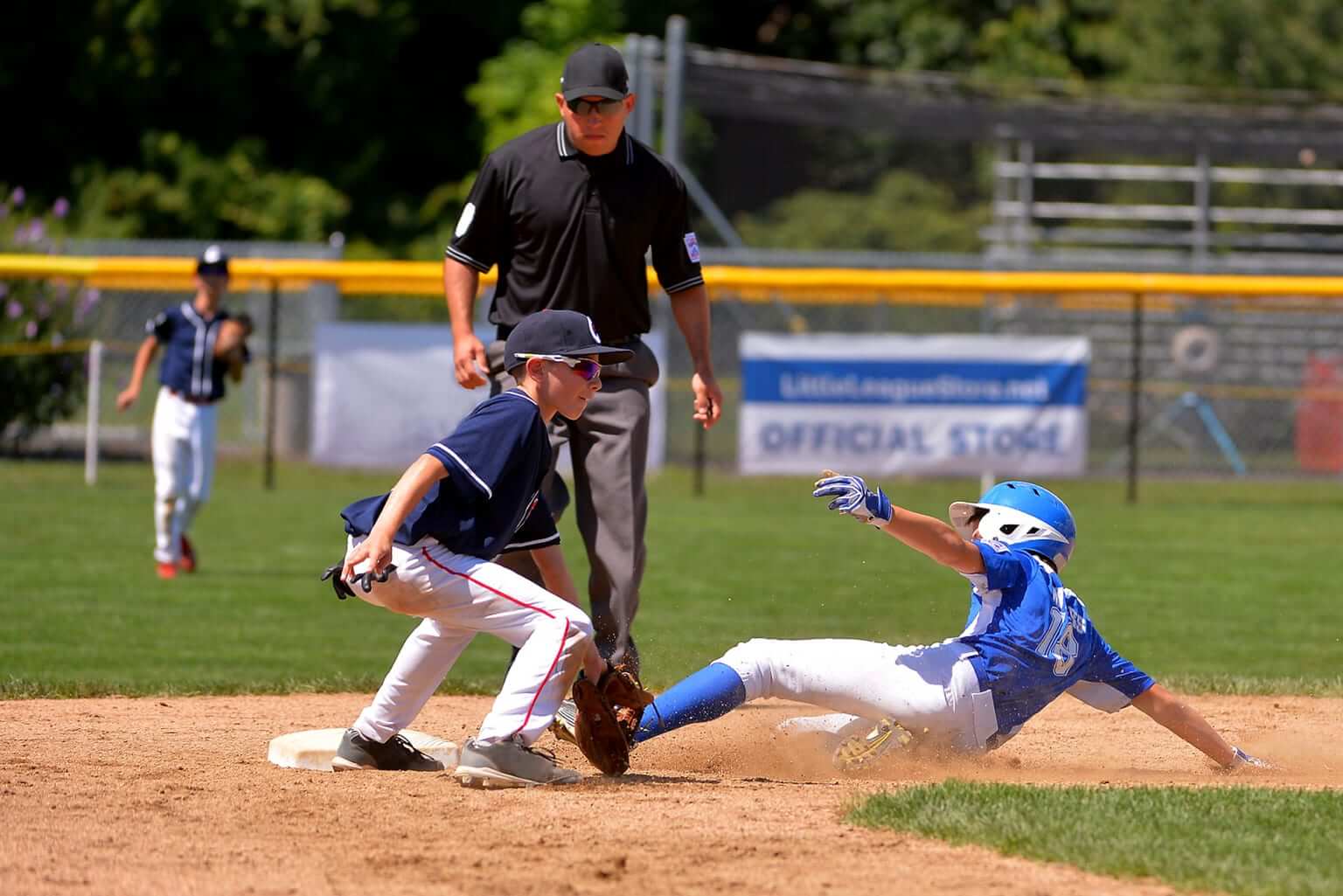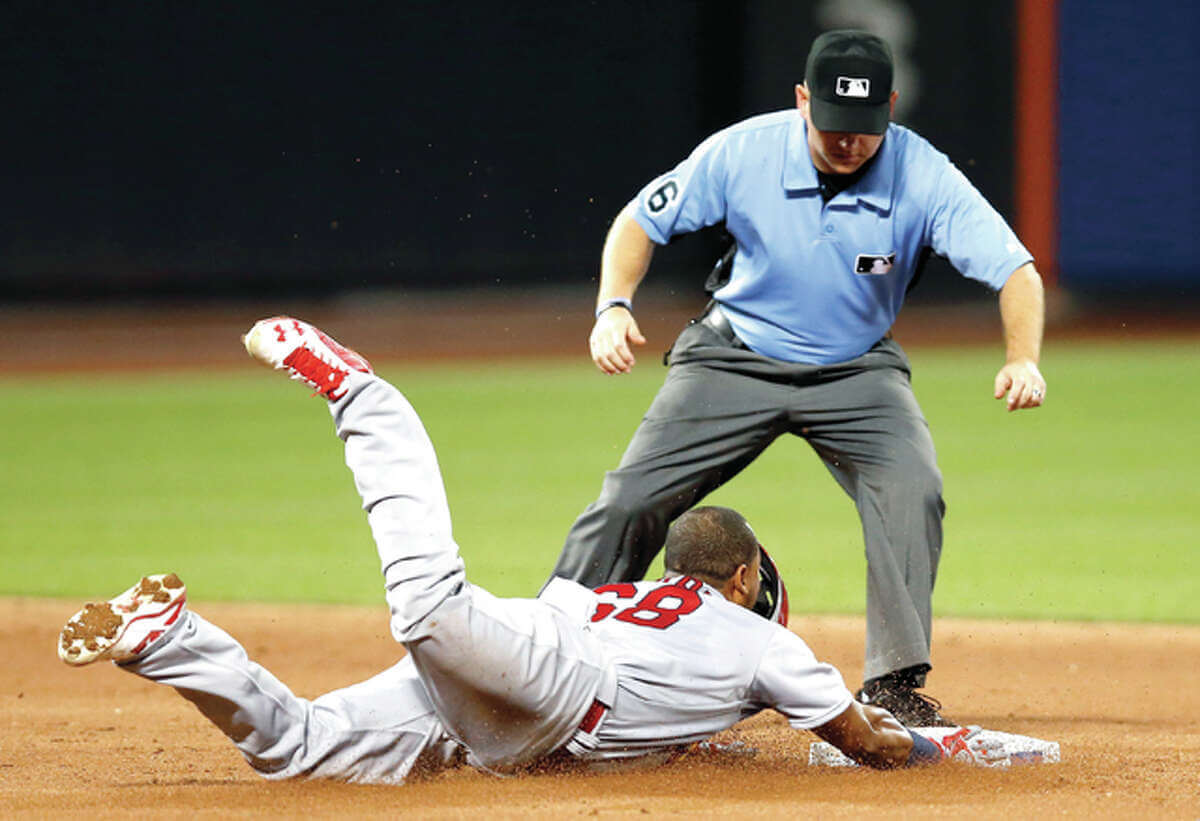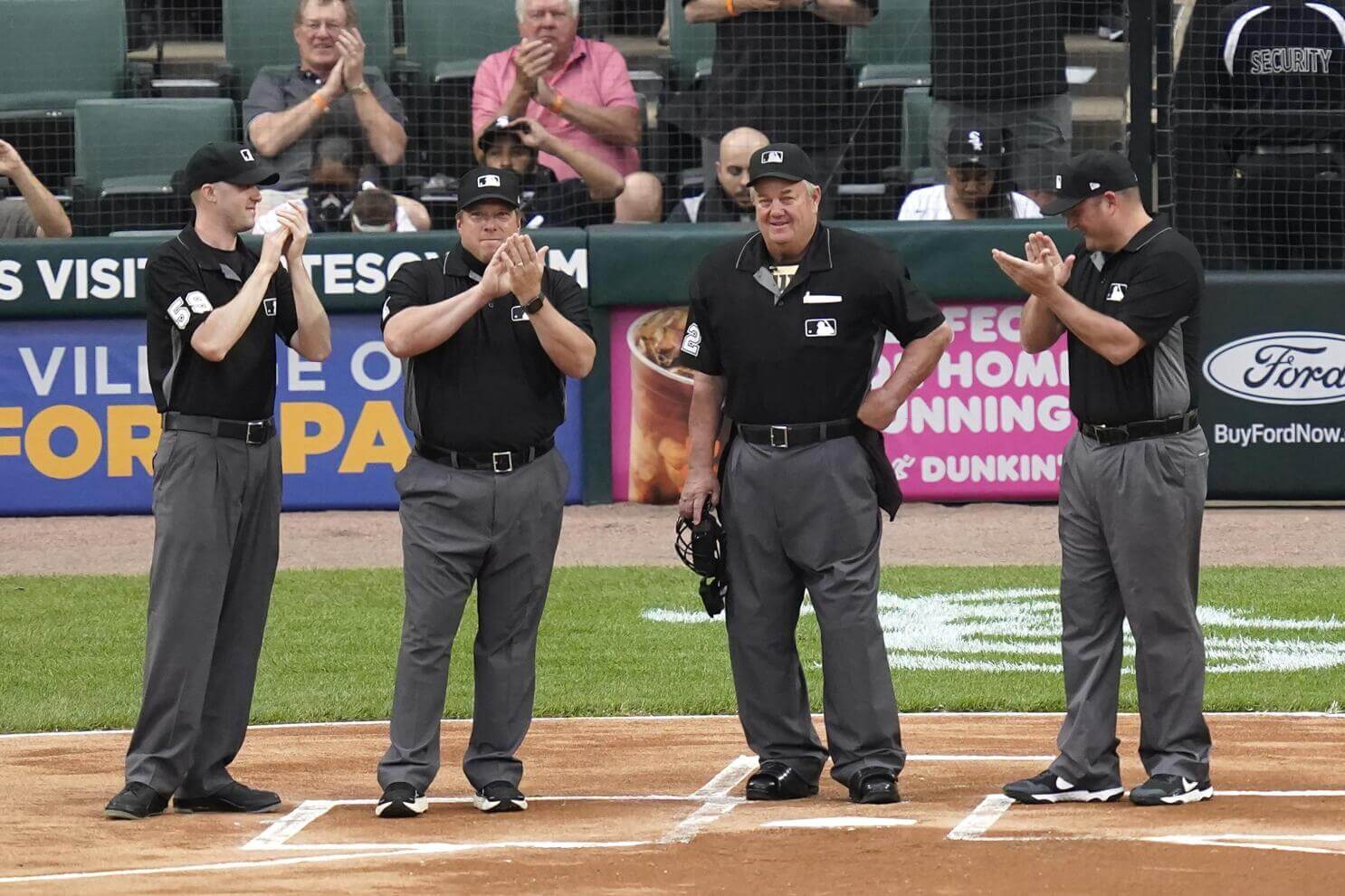This article will provide an overview of where umpires stand when officiating a professional baseball game. The goal is to give readers a comprehensive understanding of the positioning and responsibilities of each umpire on the field. Proper umpire mechanics and positioning are crucial for calling balls, strikes, outs, and safe calls accurately.
We will cover the typical locations for the plate umpire, base umpires, and outfield umpires during different phases of the game. Understanding the strategic spots that allow umpires the best vantage points and ability to make correct calls is an important aspect of baseball officiating. By the end, readers will have learned the nuances of standard umpire positioning and mechanics used at the professional level.
Home Plate Umpire

The home plate umpire is positioned directly behind home plate, lined up with the catcher’s left shoulder. Their main responsibility is calling balls and strikes and determining whether a pitch is in the strike zone or not.
The home plate umpire’s stance is in the “slot” position, with their head positioned directly over the inside corner of home plate in order to best judge whether a pitch passes through the strike zone. Proper positioning for calling balls and strikes involves lining up the umpire’s left foot with the catcher’s left heel and their right foot with the catcher’s right heel.
In addition to calling balls and strikes, the home plate umpire is also responsible for making other calls on pitches including fair or foul balls, catch or no catch on foul tips, and catcher’s interference. They must remain focused on each pitch to accurately judge the flight of the ball.
First Base Umpire

The first base umpire stands in foul territory near first base, positioned 10-15 feet from the base along the foul line to get a proper angle on fair/foul calls. As the name suggests, the first base umpire is primarily responsible for calls pertaining to first base, including force plays, tag plays, overthrows, dropped balls, obstruction, interference, and balls hit down the right field line. However, the most important duty for the first base umpire is judging fair and foul balls down the right field line.
The first base umpire will start each pitch positioned in foul ground parallel to the base in order to see the batter and the flight of the pitched ball while also keeping an eye on the first baseman and any runners. Upon contact, the umpire will pivot into fair territory to determine if the ball stays fair or goes foul. For balls hit further down the line, the umpire will move out into the outfield while maintaining focus on the base in case of an errant throw. Proper positioning is critical for the first base umpire to accurately judge fair and foul balls.
Second Base Umpire

The second base umpire stands in the infield grass behind second base. Their main responsibility is to watch tag plays at second base and any plays that happen in the infield.
On balls hit to the outfield when there is a runner on first base, the second base umpire will move and cover second base in case the runner attempts to advance. They will also move to cover third base if there are runners at first and second. This allows them to make calls on force plays, tag plays, and any appeals at second and third base.
The second base umpire is considered the “infield umpire” in a two-person crew. They are responsible for watching a majority of the action that happens in the infield while the other umpire focuses on home plate and the batter. Proper positioning by the second base umpire is critical to ensure they have the best view to make the correct call on close plays on the bases.
Third Base Umpire

The third base umpire stands in foul territory near third base, positioned several feet behind the base towards home plate. Their primary responsibility is making fair/foul calls on balls hit down the third base line. According to the data, the third base umpire focuses on watching the flight of the ball and judging whether it stays fair or goes foul once it passes third base.
They are also responsible for any calls at third base itself, so they need to be in a position to clearly see plays there while still having a view of the third base line. On balls hit to the outfield, the third base umpire needs to hustle into fair territory in case they need to cover a play at third base. So their starting position provides the optimal angle to judge fair/foul balls while still allowing them to be mobile enough to get the best view of plays at third base.
Left Field Umpire
The left field umpire stands in the outfield grass in left field. Their main responsibility is to watch for catch/trap calls on balls hit to left field. They will make the call on whether a ball was caught cleanly or if it was trapped against the ground. This is important especially on balls that may bounce close to the wall or the line. The left field umpire will communicate these calls to the rest of the crew through visual signals.
They are also responsible for any calls on the left field line such as fair/foul balls down the line. On any balls hit to left-center field, the left field umpire may need to communicate with or defer to the center field umpire who may have a better view on the play.
Right Field Umpire
The right field umpire stands in the outfield grass in right field and is responsible for making catch/trap calls on balls hit to the outfield. They need to be in position to have the best view possible to determine if a ball was caught cleanly or if it hit the ground first. According to the source, in a two umpire system, the base umpire (U1) has responsibility for all tag ups at first and second base, so the right field umpire can focus on their main duty of judging catches.
The right field umpire starts each play standing in the outfield grass, turns to face the infield as the pitch is thrown, then rotates to follow the ball, drifting back if necessary. On balls hit to the opposite field, they may need to hustle to get into position to make the proper call. With a good view of the field and by being properly positioned, the right field umpire can confidently make the correct call on catch/trap plays.
Center Field Umpire
The center field umpire is a rarely used extra umpire who helps with judging long fly balls down the outfield lines. In a standard two- or three-umpire crew, the responsibilities of the center field umpire are covered by the other umpires. However, for important games with large crowds like championship matches, a center field umpire may be added.
This extra umpire is positioned in center field to get the best vantage point for long fly balls near the outfield walls. They will make calls on home runs, ground-rule doubles, fan interference, and trapped balls in the deepest parts of the outfield. Having an dedicated center field umpire allows the other umpires to focus on their main coverages knowing they have support on difficult judgment calls in the furthest reaches of the field.
Responsibilities

Umpires in baseball have a number of important responsibilities in order to officiate the game properly.
Some of their key duties include:
-
Determining if balls hit into the field of play are fair or foul. The umpire positioned down the foul line must watch the path of the ball and determine if it stays between or crosses outside the foul poles. If the ball stays fair, it is in play. If it crosses outside the poles, it is a foul ball [1].
-
Judging if a ball is caught or trapped. When a fielder makes a diving or sliding catch, the umpire must determine if the ball was securely caught or if it hit the ground first. If caught, the batter is out. If trapped, the ball is in play [2].
-
Ruling on tag plays. When a runner is attempting to reach a base and is tagged by a fielder, the umpire decides if the tag was applied before the runner arrived safely at the base. This often requires the umpire to be in proper position to see the timing of the tag clearly.
-
Making calls on the bases. Umpires need to determine if runners reached each base before the ball arrived at the baseman’s glove. Close plays are decided by the umpire’s judgment on timing between the runner touching the base and the ball entering the fielder’s control.
Conclusion
In summary, umpires take up key positions on the baseball field in order to best view the action and make fair calls. The home plate umpire stands behind the catcher to call balls, strikes, and plays at home. The first base umpire positions himself in foul territory down the right field line to make calls on that side of the infield. The second base umpire stands in the outfield grass behind the shortstop to call plays on the left side of the infield. The third base umpire stands in foul territory down the left field line to call plays on that side.
Additional umpires take up positions in the outfield to help judge catches and plays on the bases. Though positioning varies based on the number of umpires and specific situations, their main responsibilities are to get the best view of the action in order to accurately call balls, strikes, outs, and safe/out calls on the bases.








